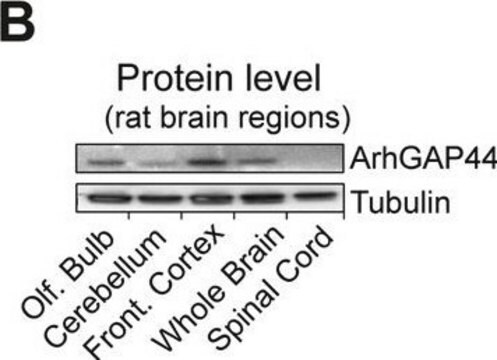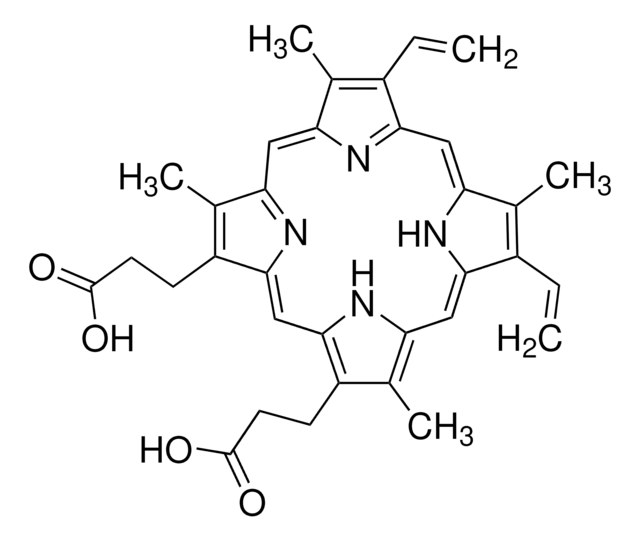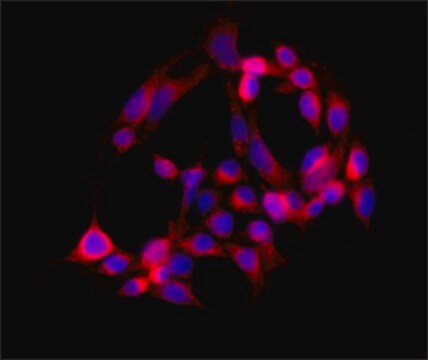AB3203
Anti-Tubulin Antibody, δ 2
Chemicon®, from rabbit
Sinônimo(s):
Anti-α-tubulin, Tubulin antibody
About This Item
Produtos recomendados
fonte biológica
rabbit
Nível de qualidade
forma do anticorpo
affinity purified immunoglobulin
tipo de produto de anticorpo
primary antibodies
clone
polyclonal
purificado por
affinity chromatography
reatividade de espécies
sea urchin, echinoderm, plant
não deve reagir com
Saccharomyces cerevisiae
reatividade da espécie (prevista por homologia)
mammals
fabricante/nome comercial
Chemicon®
técnica(s)
immunocytochemistry: suitable
immunohistochemistry (formalin-fixed, paraffin-embedded sections): suitable
western blot: suitable
nº de adesão NCBI
nº de adesão UniProt
Condições de expedição
wet ice
modificação pós-traducional do alvo
unmodified
Informações sobre genes
human ... TUBD1(51174)
Descrição geral
Especificidade
SPECIES REACTIVITY:
Mammals, sea urchin, plants, not yeast (Lafanechere et al. 1994).
Imunogênio
Aplicação
Cell Structure
Cytoskeleton
Immunohistochemistry and EM on either frozen or paraffin embedded, fixed tissue (Mialhe et al. 2001): 1:500
Optimal working dilutions must be determined by the end user.
forma física
Armazenamento e estabilidade
Outras notas
Informações legais
Exoneração de responsabilidade
Não está encontrando o produto certo?
Experimente o nosso Ferramenta de seleção de produtos.
Código de classe de armazenamento
12 - Non Combustible Liquids
Classe de risco de água (WGK)
WGK 2
Ponto de fulgor (°F)
Not applicable
Ponto de fulgor (°C)
Not applicable
Certificados de análise (COA)
Busque Certificados de análise (COA) digitando o Número do Lote do produto. Os números de lote e remessa podem ser encontrados no rótulo de um produto após a palavra “Lot” ou “Batch”.
Já possui este produto?
Encontre a documentação dos produtos que você adquiriu recentemente na biblioteca de documentos.
Nossa equipe de cientistas tem experiência em todas as áreas de pesquisa, incluindo Life Sciences, ciência de materiais, síntese química, cromatografia, química analítica e muitas outras.
Entre em contato com a assistência técnica







